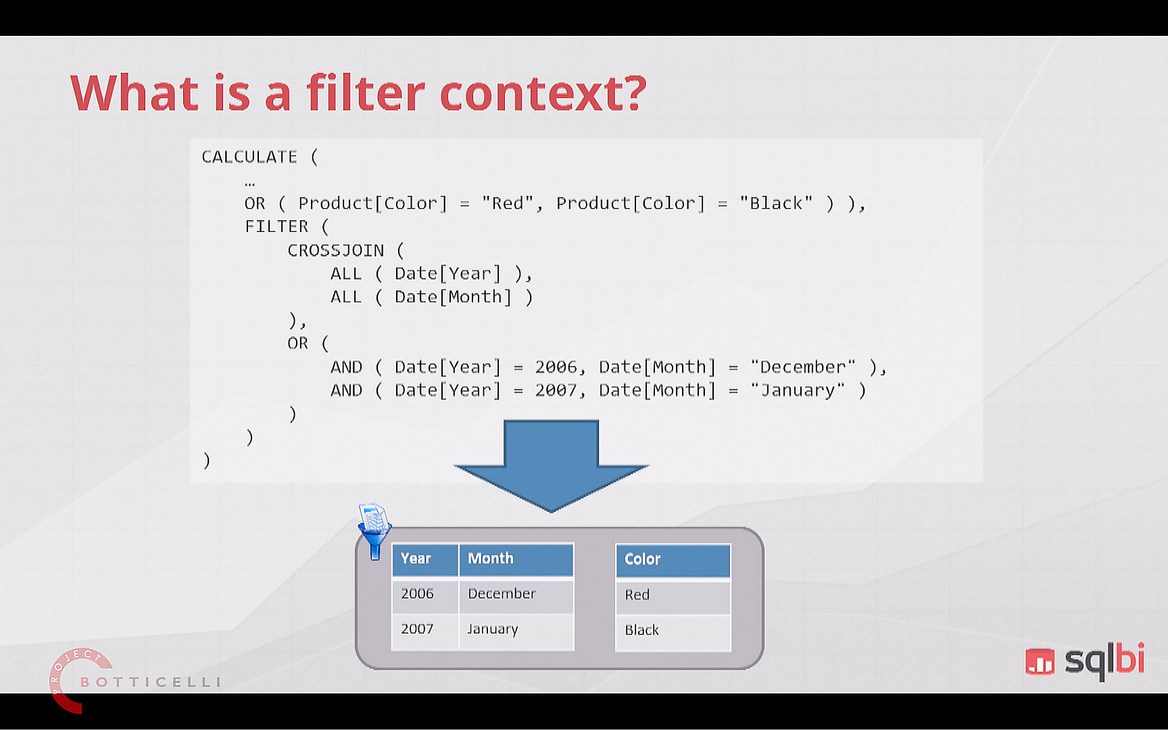Mastering DAX Workshop

In previous sections, you have learned how to manipulate evaluation context to compute simple formulas. The definition of evaluation contexts used so far is incomplete or, rather, an approximation of what evaluation contexts really are. In order to proceed with more intricate calculations and to obtain a full understanding of how DAX evaluates expressions, you need to move to the next level and to thoroughly learn the way evaluation contexts work and how they interact.
In this section we are going to uncover all the complexities of evaluation contexts and show many examples of expressions that look wrong at first sight, but only because you do not have a full understanding of how they work. Learning these detailed topics is mandatory if you want to fully understand DAX and learn how to use it in the more complicated scenarios.
Starting with the analysis of strange results in filter propagation, you will be introducted to key topics such as base tables and expanded tables and context propagation.
Remember that filters are better on columns rather than tables, and you will see a first applicataion of these concepts computing a simple percentage.
After a recap of the filter context, you will be introduced to a more formal definition of a filter context and to the existing internal filter context operators, with an example of a counterintuitive result when you use ALL.
The function KEEPFILTERS plays an important role in keeping the existing filter context when you apply new filters. You should also be aware that SUMMARIZE is useful only to obtain the equivalente of a SELECT DISTINCT, and should he avoided as an aggregator.
After a recap of the advanced concepts in filter context, you will explore the insights of ALLSELECTED and you will finally practice Lab 7.
Log in or purchase access below to the premium version of this content.
Purchase A Full Access Subscription
- Payment is instant and you will receive a tax invoice straight away.
- Your satisfaction is paramount: we offer a no-quibble refund guarantee.
Jump to a chapter
- Introduction to Advanced Filter Context (00:08)
- Filter Propagation and Strange Results (01:03)
- Key Topics (04:52)
- Base Tables and Expanded Tables (05:33)
- Context Propagation (12:03)
- Filter Is on Columns, Not Tables (16:53)
- Example: Compute a Simple Percentage (19:03)
- First Recap of Filter Context (28:11)
- Definition of a Filter Context (29:13)
- Filter Context Operators (32:21)
- Example: Filter Context Puzzle (42:11)
- KEEPFILTERS Function (46:25)
- Dangers of SUMMARISE (58:34)
- Recap of Advanced Filter Context (60:27)
- Inside ALLSELECTED (61:31)
- Lab 7 (81:17)

